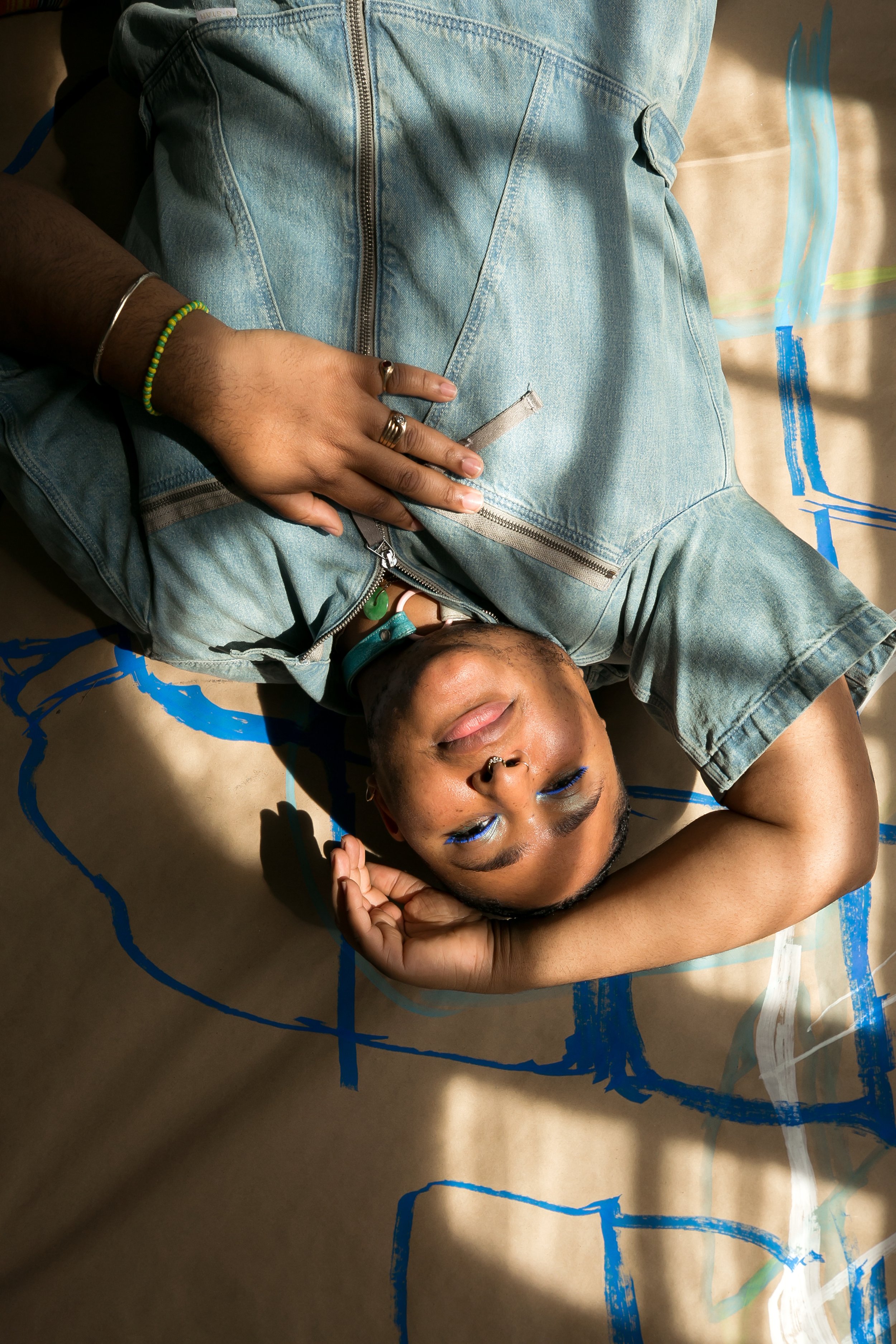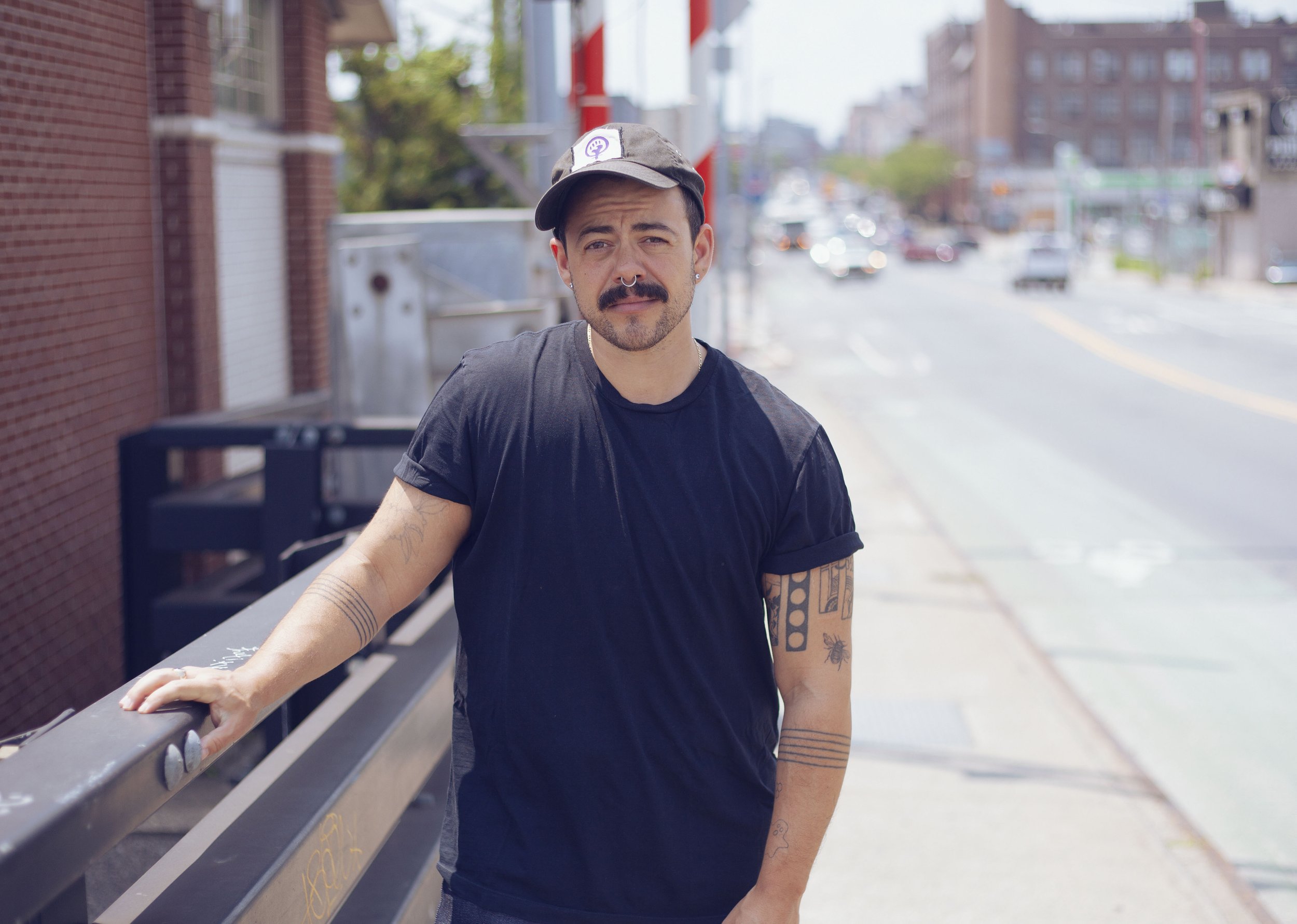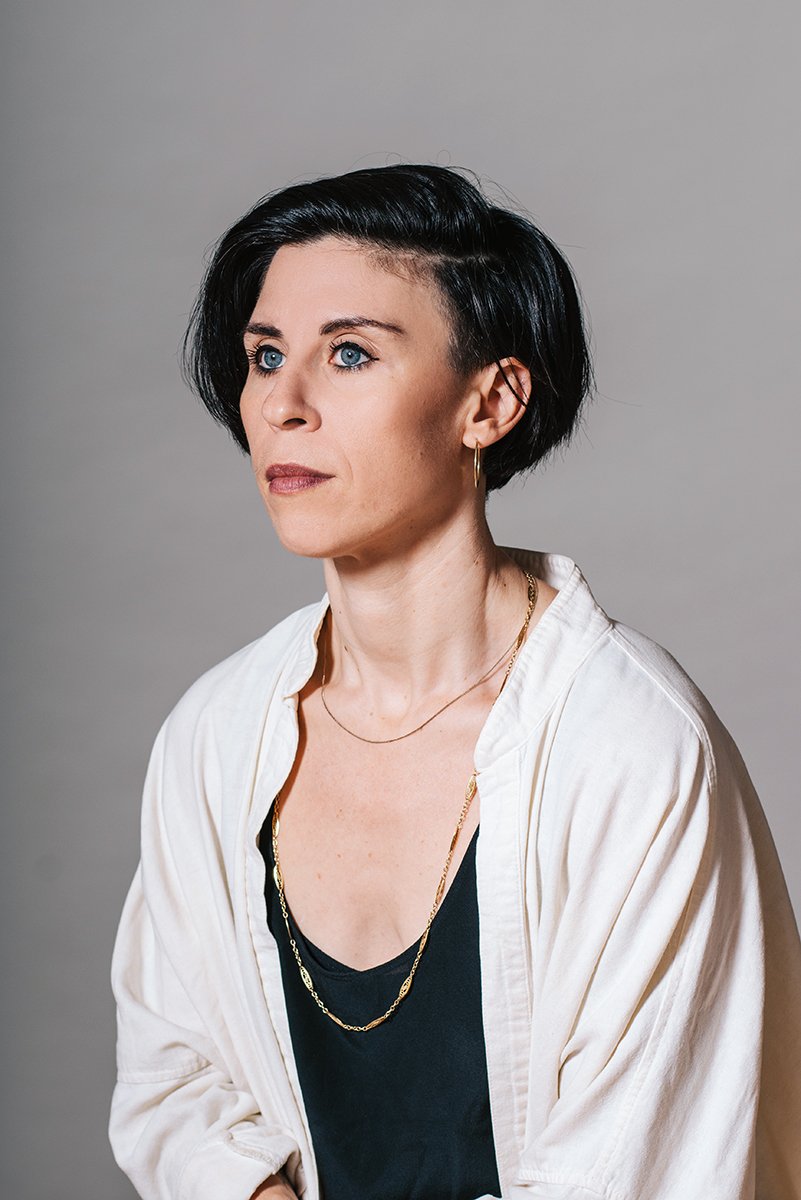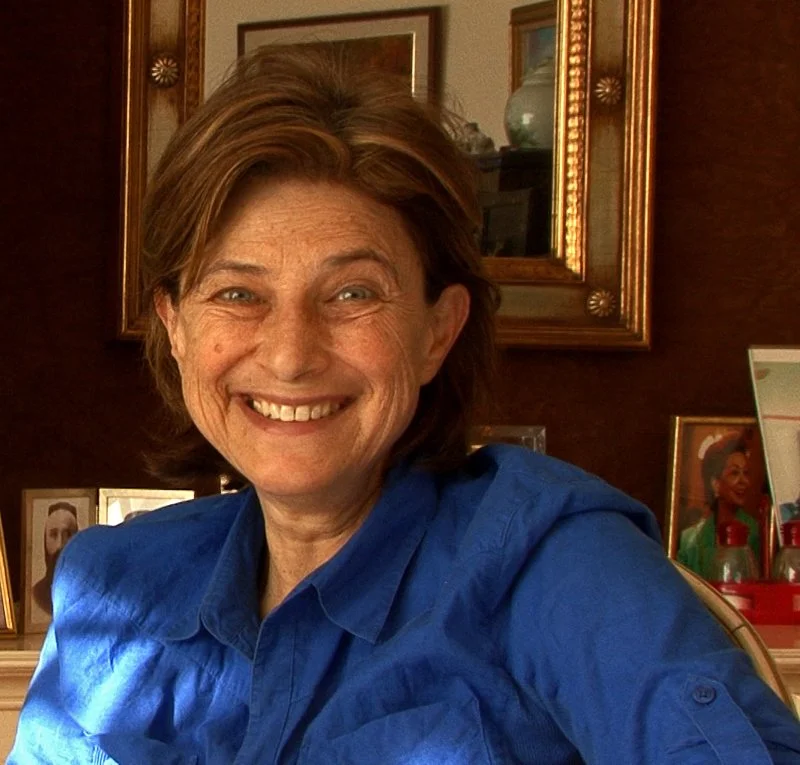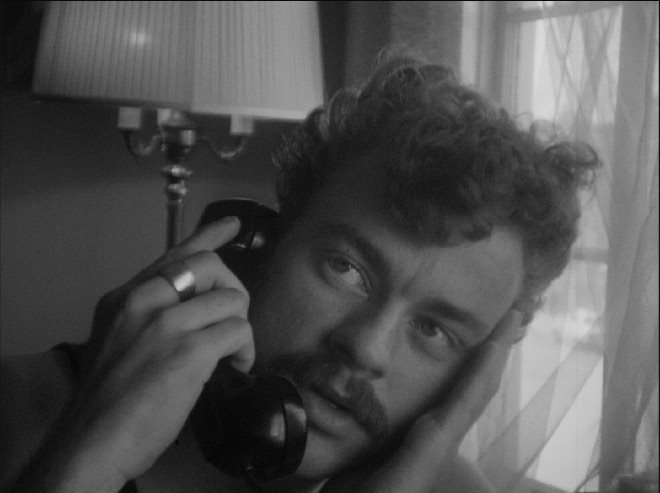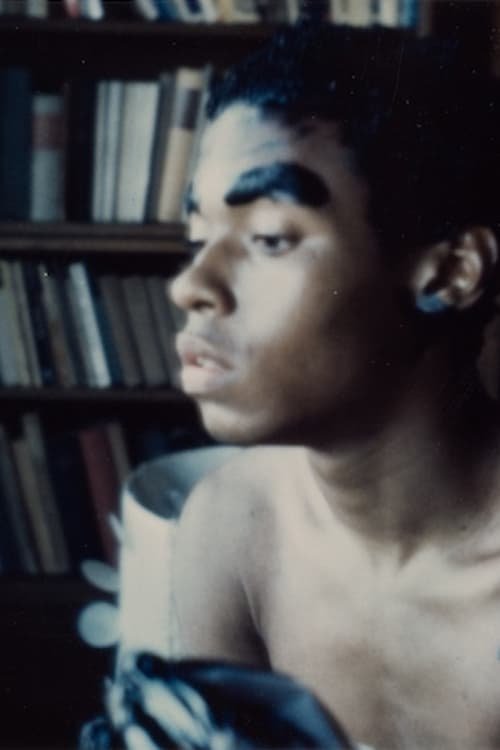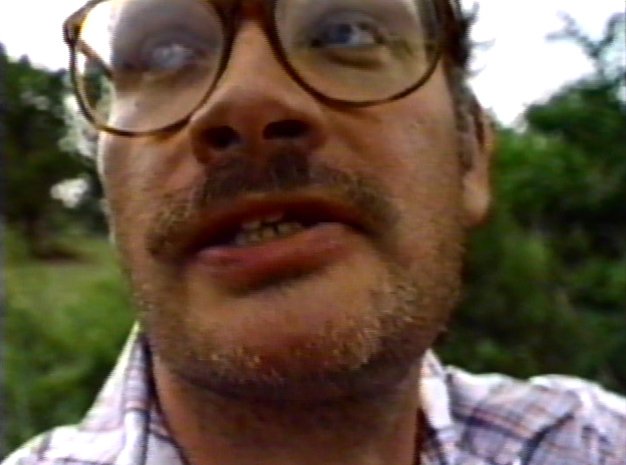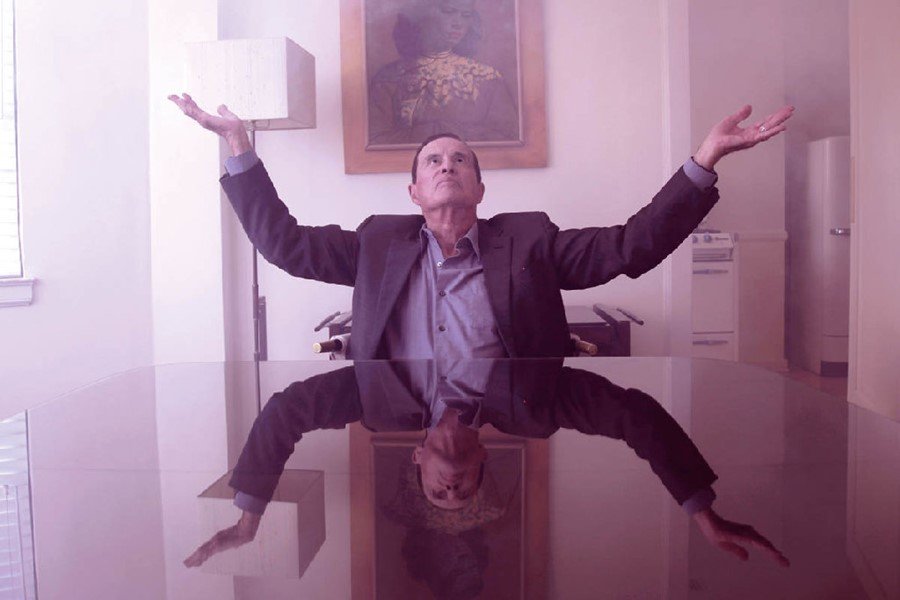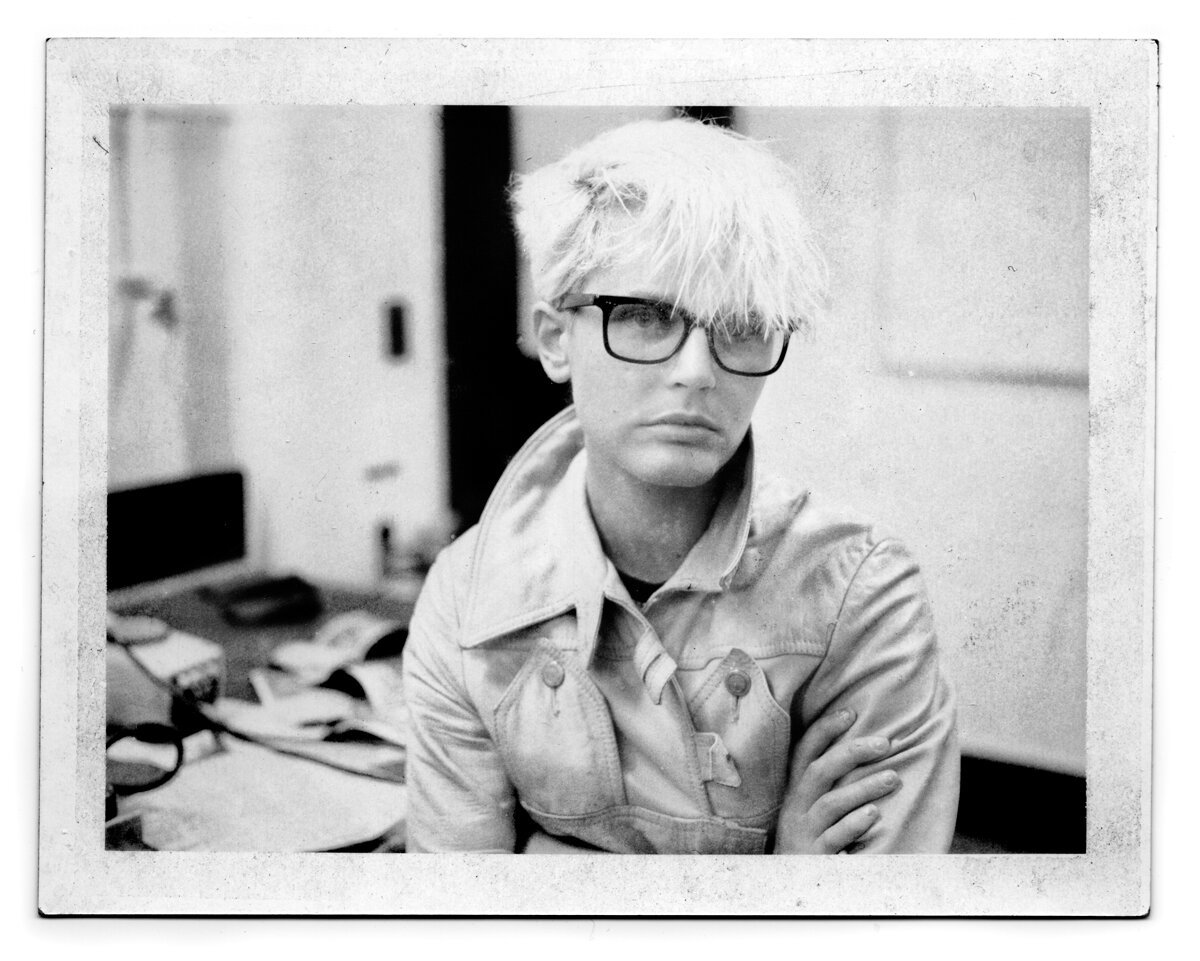The 68th Flaherty Film Seminar
Queer World-Mending
Artists
Amina Ross
Amina Ross is an artist, educator and lifelong learner. Ross makes videos, texts, sculptures, sounds, and situations. Ross worked as an educator at the Museum of Contemporary Art, Chicago, was a lecturer at the School of the Art Institute of Chicago, and a critic at Rhode Island School of Design. Ross is currently Part-time faculty at Parsons School of Design | The New School. They received a BFA from the School of the Art Institute of Chicago and an MFA from the Yale School of Art. They have recently exhibited work at Sentiment (Zurich, CH), Wave Hill (Bronx, NY), The Luminary (St. Louis, MO), Iceberg Projects (Chicago, IL) and M23 (New York, NY) among other venues. Ross is a current artist-in-residence at The Bronx Museum and The Lower East Side Printshop. They recently completed residencies at Skowhegan School of Sculpture and Painting (Madison, ME), Abrons Art Center (New York, NY), and Harvestworks (New York, NY).
Angelo Madsen Minax
Angelo Madsen Minax is a multi-disciplinary artist, filmmaker and educator. His projects consider how human relationships are woven through personal and collective histories, cultures and kinships, with specific attention to subcultural experience, phenomenology, and the politics of desire. Madsen’s works have been shown at Berlinale, TIFF, Sundance, NYFF, BAMCinemaFest, Anthology Film Archives, British Film Institute, and others. His film North by Current (2021) aired on season 34 of POV (PBS), was nominated for an Independent Spirit award, and won the Cinema Eye Honors Spotlight award, Best Writing award from the IDA and numerous festival jury prizes. A New York Times Critic’s Pick, North by Current has been called “A beautiful, complex wonder of a film” by Rolling Stone and “A titanic work” by Criterion. Madsen is currently an Associate Professor of Time-Based Media at the University of Vermont, a USA Artists Fellow, and a Guggenheim Fellow.
Bamboat | Mitchell
Sharlene Bamboat is a moving image and installation artist based in Tiohtià:ke/Montreal. Her practice engages with translation, history, and sound to uncover sensory and fractured ways of understanding the relationship between the self and the social in transnational contexts. Her works examine the role of colonialism, globalization, culture, and desire through poetics, abstraction, and collaboration by working with artists, musicians and writers to animate historical, political, legal, and pop-culture materials.
In addition to her art practice, Sharlene works in the arts sector, including artist-run organizations and collectives in Canada, and with artists locally and internationally.
Her most frequent collaborator, since 2009, is Alexis Kyle Mitchell.
Alexis Kyle Mitchell is an artist and scholar based in Glasgow. Mitchell completed a PhD in Human Geography at the University of Toronto and currently holds a Postdoctoral Fellowship at the Center for Disability Studies at New York University under the supervision of Dr. Faye Ginsburg. Screenings and exhibitions include Henry Art Gallery (Seattle), Mercer Union (Toronto), Berwick Film & Media Arts Festival, and International Film Festival Rotterdam. She often works collaboratively alongside artist Sharlene Bamboat as Bamboat | Mitchell.
Barbara Hammer (1939–2019)
Barbara Hammer was a visual artist who primarily worked in film and video. Her cinema is multi-leveled and engages an audience viscerally and intellectually with the goal of activating them to make social change. She has been honored with retrospectives at MoMA in New York, Tate Modern in London, Jeu de Paume in Paris, the Toronto International Film Festival, and Kunsthalle Oslo. Her book Hammer! Making Movies Out of Sex and Life was published in 2010 by the Feminist Press, CUNY.
Beryl Sokoloff (1918–2006)
Beryl Sokoloff was an artist of many mediums — a painter, a photographer, a photojournalist, a musician, and a filmmaker. In his filmmaking career, Sokoloff focused on portraits of numerous artists and the process of making art, observations of politics and society, and poetic evocations of both New York City and landscapes encountered through his travels, frequently weaving these various threads together in individual films.
Chantal Akerman (1950–2015)
Chantal Akerman was a renowned filmmaker, writer and artist, considered one of the most important directors of her generation. The daughter of Holocaust survivors, she directed over forty documentary and fiction films and created several art installations. La Chambre is an early short film that she made soon after seeing Michael Snow’s epic structuralist film La Région centrale (1971), which opened up the possibilities of non-narrative cinema for her. Critic B. Ruby Rich claimed Akerman’s first fiction feature, Je tu il elle (1974) was akin to the ”cinematic Rosetta Stone of female sexuality.” In 2022, her film Jeanne Dielman, 23 quai du Commerce, 1080 Bruxelles (1975) was voted the great film of all time in the Sight and Sound poll.
Curt McDowell (1945–1987)
Curt McDowell was an American underground filmmaker. He left his hometown of Lafayette, IN, for San Francisco, initially studying painting at the San Francisco Art Institute before switching to film. He studied under George Kuchar there, and they became lovers, friends and collaborators (notably on the horror-porno-comedy feature Thundercrack!). McDowell’s highly libidinal films ranged from crude skits to very personal experiments plumbing desire and power. Critic Glen Helfand writes, “Curt McDowell worked in San Francisco from the late 1960s until his death in 1987 — a period that witnessed the Summer of Love, gay liberation and the onset of AIDS, to which he succumbed at the age of forty-two. He was the director of numerous films that recast the American dream of plenty in pansexual terms.”
Edward Owens (1949–2009)
Edward Owens was a Chicago-born African-American filmmaker. As a painting and sculpture student at the Art Institute of Chicago who also made 8mm films, he was encouraged by his teacher Gregory Markopoulos to move to New York City. Arriving in 1966, he was soon ushered into the city’s queer underground. In the late 1960s when he was still only a teenager, he “created a cluster of films that display an increasing mastery of form,” in critic Ed Halter’s words. After completing his acclaimed featurette Tomorrow’s Promise, he returned to Chicago to make Remembrance: A Portrait Study and Private Imaginings and Narrative Facts taking his own family as subject matter, notably his mother Mildered Owens and her friends. He stopped making films in 1971, living the rest of his life on the South Side of Chicago.
The films of Edward Owens were restored in a joint project undertaken by Chicago Film Society, The New American Cinema Group, Inc./The Film-Makers’ Cooperative, and the John M. Flaxman Library at the School of the Art Institute of Chicago. This project was made possible with the support of the National Film Preservation Foundation’s Avant-Garde Masters Grant Program and the Film Foundation. Funding provided by the Hobson/Lucas Family Foundation. Restoration: BB Optics; Laboratory Services: Colorlab.
Emily Vey Duke & Cooper Battersby
Emily Vey Duke is an experimental moving image and object maker from Nova Scotia. In 2016, her ten-year drawing and writing collaboration with Shary Boyle was made into an award-winning book called The Illuminations Project.
Cooper Battersby is an experimental moving image and object maker from Canada. He has collaborated with Emily Vey Duke for over two decades. Their work has been shown at the Whitney Museum of American Art, Walker Art Center, Institute of Contemporary Art Philadelphia, Musée d’art contemporain de Montréal, New York Film Festival, International Film Festival Rotterdam, Images Festival, Berwick Film & Media Arts Festival, and the Ann Arbor Film Festival among many others. In 2011, they were shortlisted for the Sobey Art Award, Canada’s most prestigious prize for artists under forty. A book about their work, The Beauty Is Relentless, came out in 2012.
George Kuchar (1942–2011)
George Kuchar was a legendary underground filmmaker and prolific video diarist. With his twin brother Mike, Kuchar produced an astonishing array of Super-8 and 16mm films in the late 1950–60s inspired by the Hollywood melodramas and Z-grade movies of their Bronx childhood. He turned from celluloid to the “despised” medium of video in the 1980s, making hundreds of witty and intimate self-narrated tapes that both observe and comment on his day-to-day life, veering from the scatological to the sublime. Kuchar taught filmmaking at the San Francisco Art Institute from 1971 to 2011, and he referred to filmmaker Curt McDowell as his “first student.” McDowell went on to be his lover, friend and collaborator (notably on the horror-porno-comedy feature Thundercrack!).
Gunvor Nelson
Gunvor Nelson (b. 1931) was born and studied in Stockholm before moving to the USA in 1953 where she studied at Humboldt State College, San Francisco Arts Institute (SFAI) and Mills College, graduating with an MFA in painting. Her films include Schmeerguntz (1965, with Dorothy Wiley), My Name Is Oona, (1969) and Kirsa Nicholina (1969). She taught at San Francisco State University from 1969–70 and the SFAI from 1970–1992 before moving back to Sweden in 1993. Her films have been screened at major art museums as MoMA in New York, Moderna Museet in Stockholm and at cinematheques in Europe and North America.
James Richards
James Richards (b. 1983, Cardiff, Wales; lives and works in Berlin). Known for his provocative and visually seductive moving-image works that collage together a range of source material — such as intimate home movies, archival footage, television signals and rich musical soundtracks — Richards’s work addresses the relentless flow of imagery that has come to define the 21st century, carving out a space where personal politics and digital materiality might meet. Concurrent with filmmaking, Richards has presented numerous exhibition projects informed through archival research and ongoing collaborative exchanges with other artists. He has made a number of collaborations with Steve Reinke, including Disambiguation and What Weakens the Flesh Is the Flesh Itself. Reinke is an artist and writer best known for his monologue-based video essays.
John Greyson
John Greyson (b. 1960) is a video/film artist based in Toronto. Since 1984, his many features, shorts and transmedia works have explored such queer activist issues as police violence, prison, AIDS activism, solidarity, homo-nationalism and apartheid (both South African and Israeli). His feature films include Fig Trees (2009), Lilies (1996), Zero Patience (1993), and Urinal (1989), and they have received numerous awards from festivals around the world. He is currently an Associate Professor in York University’s Cinema & Media Arts department, and is co-editor of the groundbreaking anthology Queer Looks: Perspectives on Lesbian & Gay Film & Video. His oeuvre is the subject of the critical anthology The Perils of Pedagogy: The Works of John Greyson.
Kenneth Anger (1927–2023)
Kenneth Anger was the progenitor of queer avant-garde filmmaking in the United States, drawing heavily on mysticism and pop culture. His films include Fireworks (1947), Inauguration of the Pleasure Dome (1954) and Scorpio Rising (1963).
Leslie Thornton
Leslie Thornton (b. 1951) studied with filmmakers Hollis Frampton, Stan Brakhage, Paul Sharits, and Peter Kubelka at SUNY Buffalo. She has been honored with numerous awards, including a John Simon Guggenheim Fellowship as well as the Maya Deren Award, the first Herb Alpert Award in the Arts and two Rockefeller Foundation fellowships. Refracted through archival material, texts, found footage, and dense soundtracks, Thornton’s rigorously experimental film and video work is an investigation into the production of meaning through media. She is Professor Emerita of Modern Culture and Media at Brown University.
Luther Price (1962–2020)
Luther Price received a BFA in Sculpture and Media/Performing Arts from Massachusetts College of Art and Design, where he studied with Saul Levine, and was later a professor at the school. He worked primarily in Super8 and 16mm film, using found footage and physically intervening into the celluloid. His haunting work in film, performance and installation has been shown extensively, nationally and internationally. His 35mm slide-based work is in the collections of MoMA and the Institute of Contemporary Art, Boston.
Marlon Riggs (1957–1994)
Marlon Riggs received his Master’s degree in journalism from the University of California, Berkeley in 1981. He remained in the Bay Area, teaching at his alma mater and making a number of important documentaries for public television including Tongues Untied (1989), which was targetted by the Christian Right. Inspired by the Black gay poetry movement, this experimental testament is now recognized as a classic. Riggs was hospitalized for complications due to AIDS during the production of his ambitious final film Black Is… Black Ain’t, and it was finished posthumously by his collaborators in 1995.
Pat Hearn (1955–2000)
Pat Hearn was best known as an innovative and highly respected art dealer who ran the Pat Hearn Gallery in New York from 1983 to 2000. She was formerly an artist and dancer who had studied at the School of the Museum of Fine Arts, Boston. Her and her gallery’s papers — alongside those of her partner Colin de Land — are held by the Center for Curatorial Studies at Bard College, which organized the exhibition The Conditions of Being Art: Pat Hearn Gallery and American Fine Arts, Co. (1983–2004) in 2018.
Paul Wong
Paul Wong (b. 1954) is an award-winning Vancouver-based artist and curator known for pioneering early visual and media art in Canada, founding several artist-run groups, leading public arts policy, and organizing events, festivals, conferences, and public interventions since the 1970s. Capturing the everyday, he uses video as mirror and probe, both to discover his own identity and to reflect the world back onto itself. Wong picked up a Portapak video camera in the 70s as a renegade against the world around him and has become one of Canada’s most renowned multimedia artists, known for his fierce engagement with issues of race, sex, and death.
Roee Rosen
Roee Rosen (b. 1963) is an Israeli-American artist, filmmaker and writer known for his multilayered and provocative work which challenges the divides between history and the present, documentary and fiction, politics and erotics. Rosen’s Out won the Orizzonti award for best medium-length film at the 2010 Venice Film Festival. Several retrospectives of Rosen’s cinema have been held, among them at the International Short Film Festival Oberhausen (2012), and FICUNAM, Mexico City (2018). His film The Dust Channel premiered in documenta 14. In 2018, an expansive one-person exhibition was held at Centre Pompidou, Paris. His most recent retrospective took place at Kunstmuseum Luzern, 2022. His books include Justine Frank, Sweet Sweat (Sternberg, 2009).
Ron Vawter (1948–1994)
Ron Vawter was an American actor and a founding member of the experimental theater company The Wooster Group.
Shelley Lake
Shelley Lake received her BFA from the Rhode Island School of Design in 1976. In 1979, Lake earned a Master of Science degree from MIT and became the first female graduate of the Architecture Machine Group (now known as the Media Lab). At MIT, she trained with Nicholas Negroponte and Harold Edgerton, pioneers in the fusion of science, art, and technology. Hearn and Lake collaborated on a number of videos in the 1980s, including Seizure.
Shu Lea Cheang
Shu Lea Cheang is an artist and filmmaker whose genre-bending gender-hacking practices challenge existing operating mechanisms. She builds social interface with transgressive plots, constructs networked installation in participatory impromptu mode, and drafts sci-fi narratives in film scenario and artwork imagination. A net art pioneer, Brandon (1998–99) was the first web art commissioned and collected by New York’s Solomon R. Guggenheim Museum. Her feature-length films Fresh Kill (1994), I.K.U. (2000,) and FLUIDØ (2017) — respectively termed eco-cybernoia, sci-fi cyberpunk, and sci-fi cypherpunk — seek to define a genre of sci-fi new queer cinema. Cheang represented Taiwan with a mixed media installation 3x3x6, at Venice Biennale 2019. She is releasing her fourth feature film, UKI, a sci-fi Viral Alt-Reality cinema in 2023.
Theo Jean Cuthand
Theo Jean Cuthand grew up in Saskatoon, Saskatchewan. He makes films about sexuality, madness, Queer identity and love, gender, and Indigeneity, which have screened in festivals internationally. His work has exhibited at the MoMA in NYC, the National Gallery in Ottawa, and the Walker Art Center in Minneapolis. He completed his BFA in Film and Video at Emily Carr University of Art and Design in 2005, and his MFA in Media Production at Toronto Metropolitan University in 2015. He is a Whitney Biennial 2019 artist. He is of Plains Cree and Scots descent, a member of Little Pine First Nation, and currently resides in Toronto.
Walt Disney (1901–1966)
Walt Disney was an American motion-picture and television producer and showman, famous as a pioneer of animated cartoon films.
Wu Tsang
Wu Tsang (b. 1982, Worcester, MA, USA) is an award-winning filmmaker and visual artist. Tsang’s work crosses genres and disciplines, from narrative and documentary films to live performance and video installations. Tsang is a MacArthur “Genius” Fellow, and her projects have been presented at museums, biennials, and film festivals internationally. Awards include 2016 Guggenheim Fellow (Film/Video), 2018 Hugo Boss Prize Nominee, Creative Capital, Rockefeller Foundation, Louis Comfort Tiffany Foundation, and Warhol Foundation. Tsang received her BFA (2004) from the Art Institute of Chicago (SAIC) and an MFA (2010) from University of California Los Angeles (UCLA). Currently Tsang works in residence at Schauspielhaus Zurich, as a director of theater with the collective Moved by the Motion.

